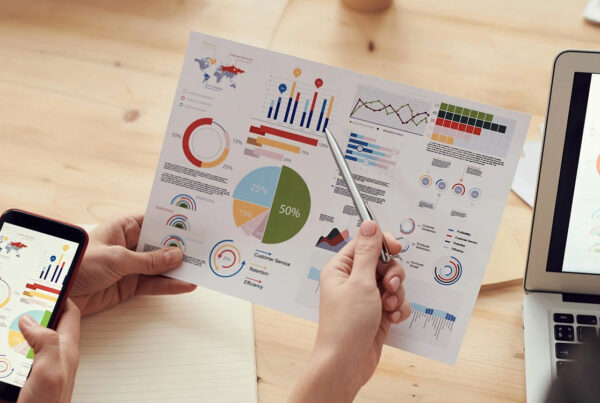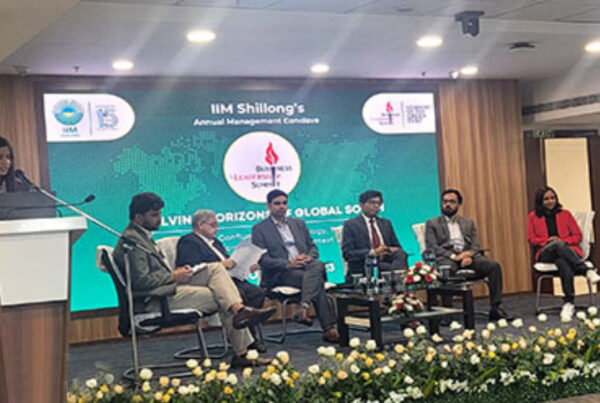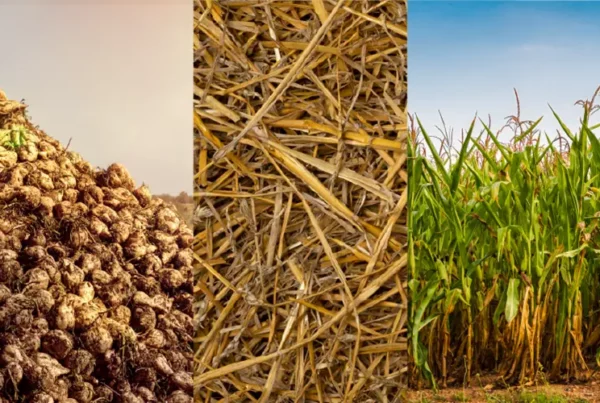By The Numbers: Silver: Set to Ride High on Bright Prospects for Solar PVs and Auto EVs
Precious metals such as gold and silver are likely to regain their sheen amid the spike in inflation that triggered a hike in interest rates across economies. The three indicators of the anticipated rise in silver prices are the contango price trend, increasing demand and supply deficit. Given the current bearish sentiment in the market as well as volatility across other asset classes, especially equities, cryptos and commodities, investors are likely to flock to safe-haven instruments such as gold and silver.
Price Performance
Silver underperformed broader markets (S&P 500 – proxy) 8 out of 11 times from 2012 until 2020, mainly due to a strong dollar; gold, on the other hand, fared better. However, silver broke the trend in 2020, significantly outperforming the market. The metal gained ~47% during the year, surpassing the S&P 500’s 16% rise, as investors sought refuge in safer assets to hedge against the disruption in the market caused by the pandemic.
The demand for precious metals has increased from the start of 2022, mainly due to the spill over of COVID-19 from 2020-21 and rise in inflationary pressures fuelled by geopolitical tensions. On YTD basis, silver outperformed the S&P 500 index by ~15%, while the dollar index (DXY) declined from its high of 105 to 103, after the Fed hiked the interest rate by 75 bp last week. This indicates a positive price action in silver is creeping in.
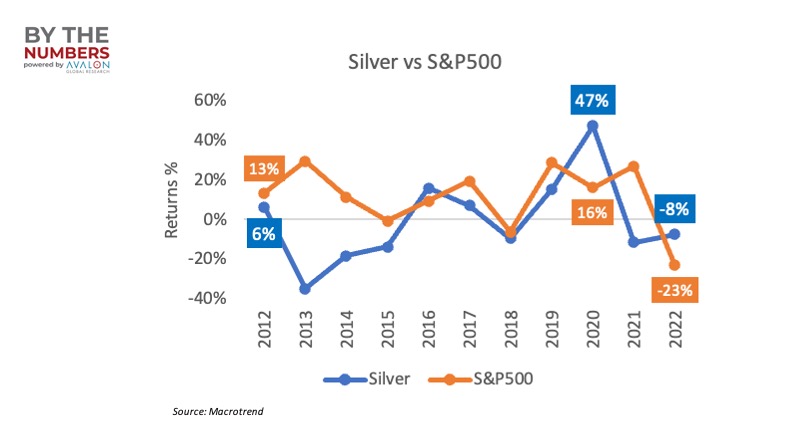
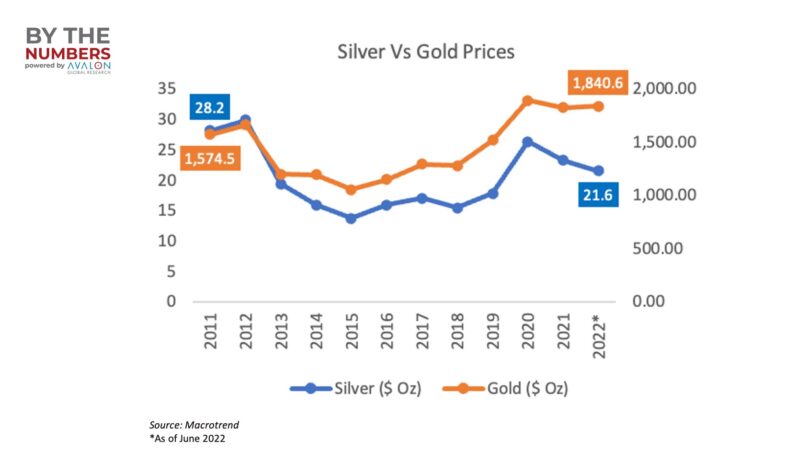
Gold has long been the most-preferred reserve asset for central banks globally. Given the yellow metal’s historical value, investors have always considered it a safe haven during times of political or economic uncertainty. Silver, on the other hand, is considered an investment class for the medium to long term, not just a safe-haven asset. This perception is in line with its use in industrial applications which would ensure sustained demand for the metal.
Return Performance
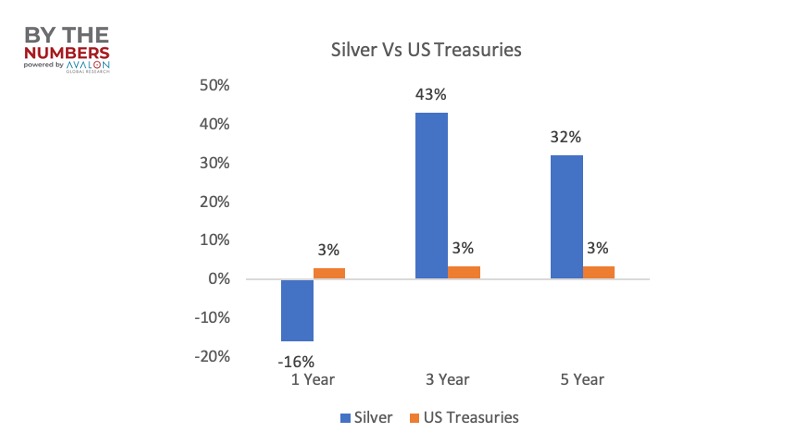
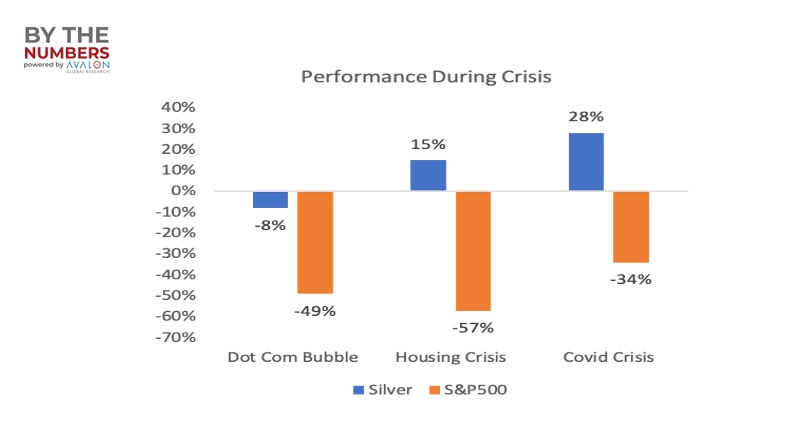
The charts above indicate silver has given better returns than any risk-free asset (US treasuries – proxy) in the medium to long term. During any crisis, the asset has held its sway, and outperformed the broader market. The charts also reveal that silver could be considered a safe-haven investment or an alternative to gold for a risk-averse investor. However, investors would do well to be aware that price volatility in silver is higher than that in gold.
Silver ETF and future contracts
Silver ETFs were launched to track performance, and thereby, help retail investors gain exposure. In India, ICICI Prudential MF was the first fund house to launch a silver ETF, introduced on 5 January 2022.
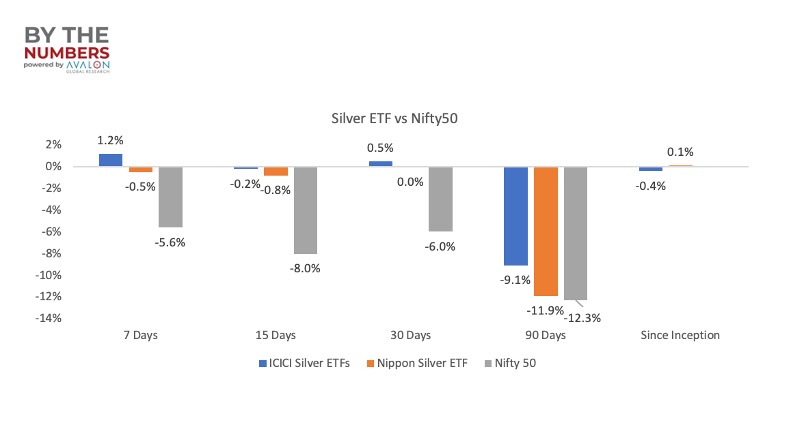
Silver ETFs have outperformed the broader market index (Nifty50 – proxy) over the specified tenures. This suggests the metal can be used as a portfolio hedging instrument, to an extent, especially during volatility in the market.
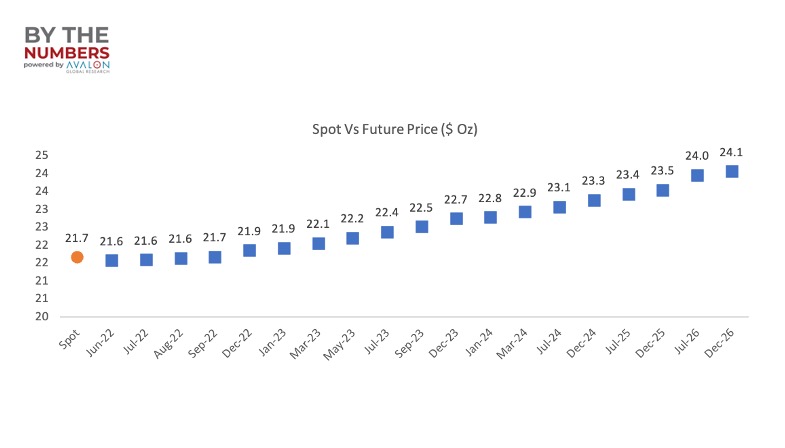
The chart above depicts the contango trend in silver prices, wherein the prices of future contracts are higher than the spot price. This affirms the expectation of a rise in silver prices over the medium to long term. However, in the near term, forward contracts are likely to trade a tad lower than the spot price (Backwardation trend), mainly due to short-term volatility and a strong dollar.
Applications
According to experts in the industry, silver may outpace gold in terms of relative growth, considering its increasing industrial applications. As consumption increases, the demand for silver is likely to strengthen, especially from the end-use sectors. Industrial applications account for more than half of the global demand for silver. Some of the industries that use silver are:
Photovoltaic cells
The high demand for silver in the solar photovoltaics (PV) segment is a key factor fuelling optimism for the metal. The quantity of silver powder used in PV cells doubled to around 101 Mn Oz in 2020 from that in 2014. In 2021, about 113.7 Mn Oz of silver was used amid a rise in solar installations globally. Interestingly, the COVID-19 pandemic had minimal to zero impact on solar PV capacity additions worldwide. According to the IEA, about 150 GW of solar capacity was added in 2021 vis-à-vis 107 GW in 2020. Capacity addition is expected to reach 162 GW in 2022.
Increasing concerns about climate change globally, prompting a shift from fossil fuels to renewable sources, majorly solar energy, bode well for the use of silver. With crude firmly above $100 bbl., fresh solar capacity additions are likely to get a boost which could translate into increased demand for silver.
Automobiles
As awareness on environmental pollution rises, the inclination or preference for electric vehicles (EVs) is growing. Automakers are increasingly switching to silver, which is compatible with green technologies, has high electrical properties and is resistant to oxidation, thereby creating strong demand for the metal.
In EVs, silver is required in most functions and systems, from electrification to charging to components and parts. Accordingly, the consumption of silver in automotives is expected to increase from 60 Mn Oz per year currently to 90 Mn Oz by 2025.
Electronics and network
Silver is used in electronic devices. Due to its superior electrical and thermal conductivity, the metal has emerged as the natural choice for printed circuit boards, switches and TV screens, among others.
Demand from the electronics & electrical sector grew 9% in 2021 with a pick-up in industrial production globally.
COVID-19-induced shutdowns severely disrupted the supply of semiconductors. Consequently, the consumption of silver decreased. However, the demand for semiconductor chips remains very high globally, given the anticipated strong rebound in their use in electronics after being subdued in 2020-21.
The launch of 5G communication networks bodes well for the consumption and demand for silver.
Multi-layer Ceramic Capacitors (MLCCs), used in 5G-enabled products as well as automotive electronics and electrification, are a rapidly growing segment. The low-fired MLCCs typically use silver and their application in mobile phones is set to increase significantly, especially with the introduction of 5G. According to The Silver Institute, the use of silver in MLCCs would increase from a mere 0.5 Mn Oz in 2017 to 1 Mn Oz in 2025 and keep rising beyond that point.
All these factors are likely to boost the consumption of silver in the coming years.
Demand
Demand for silver strengthened across categories last year, touching 1.05 Bn Oz annually, up 19% over 2020.
This was mainly due to two factors: silver as a portfolio hedge during market volatility, given its zero correlation with the broad market; and use of silver in industrial applications (as discussed above) as well as in jewellery and artefacts.
The Silver Institute estimates global demand to reach a record high of 1.1 Bn Oz by 2022.
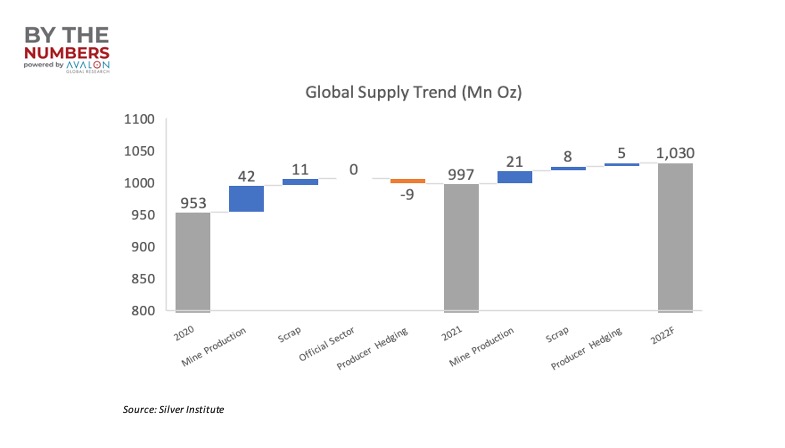
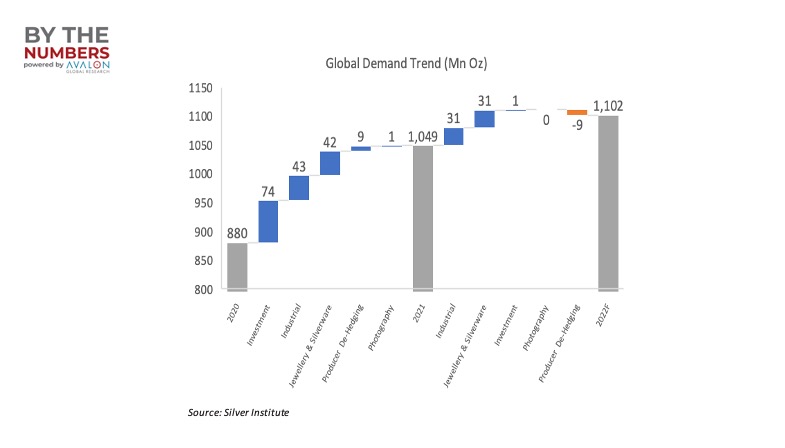
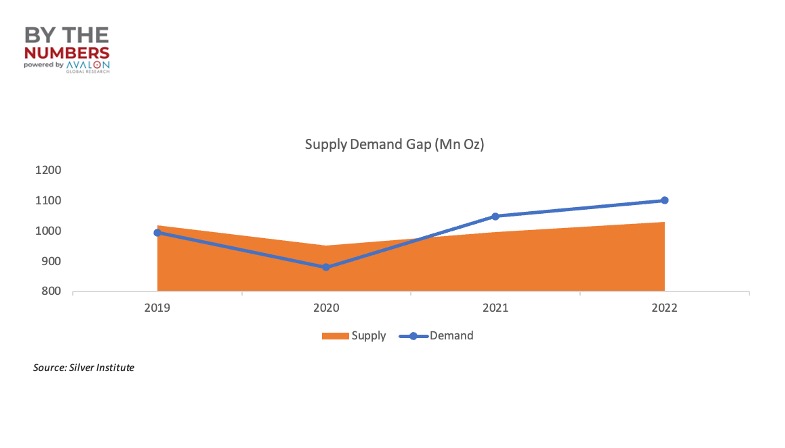
Starting from 2021, there has been a supply deficit of 51.8 Mn Oz, which is expected to increase in 2022 and persist thereafter.
In Conclusion
Majority of the applications (of silver) are in high-growth and sunrise sectors. Once the current inflation-induced bearish sentiment subsides and challenges related to the supply of semiconductors are addressed, the demand for silver is expected to take off. Going forward, prices are projected to increase and will be supported by the widening demand-supply gap. As an investment prospect, silver has outperformed the overall market during periods of crisis, serving as a safe-haven investment. However, a risk-averse investor will do well to tread carefully, bearing in mind that price volatility in silver is higher compared to that in gold.
AUTHOR –
Shashank Shankar, Analyst, Investment Research
An Economics graduate, who has successfully achieved CFA Level 3, with about 2 years of experience working in the role of business and research analyst.
Contact us at https://www.agrknowledge.com/contact-us


